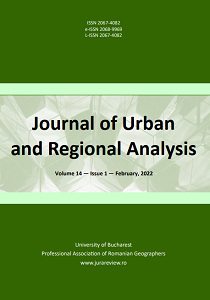RELIABILITY OF SPATIALLY-REFERENCED SECONDARY ECONOMIC DATA: VALIDATION, ISSUES, AND SOLUTIONS
RELIABILITY OF SPATIALLY-REFERENCED SECONDARY ECONOMIC DATA: VALIDATION, ISSUES, AND SOLUTIONS
Author(s): Igor SîrodoevSubject(s): Policy, planning, forecast and speculation, Rural and urban sociology, Economic development
Published by: Editura Universitară
Keywords: data quality assessment; European Classification of Economic Activities (NACE); territorial development and planning; Romania;
Summary/Abstract: In the era of ever-increasing data supply, range and diversity, there is a strong need to compare and assess the reliability of the data coming from various sources. For secondary economic data, such sources are usually grouped into two big categories: surveys carried on and statistical records kept by governmental bodies (statistical agencies etc.); and commercial data, collected by private companies from various public (or confidential) sources. The article discusses the benefits and pitfalls of these data categories on the example of the two data providers in Romania, whose data are widely used in economic research and for the development of public policies: National Institute of Statistics (NIS) and Borg Design S.R.L. (BD). The quality control of the data provided by NIS is more transparent and it is rigorously based on the international standards applied in the field of official statistical surveys; however, the spatial resolution of these data is quite coarse, usually at the level of counties. In turn, data provided by BD have a much finer spatial resolution (down to the level of villages), but their quality control is less transparent. In conclusion, the analysed data are complementary and can be used for analytical purposes, considering their limitations.
Journal: Journal of Urban and Regional Analysis
- Issue Year: 14/2022
- Issue No: 1
- Page Range: 37-58
- Page Count: 22
- Language: English

